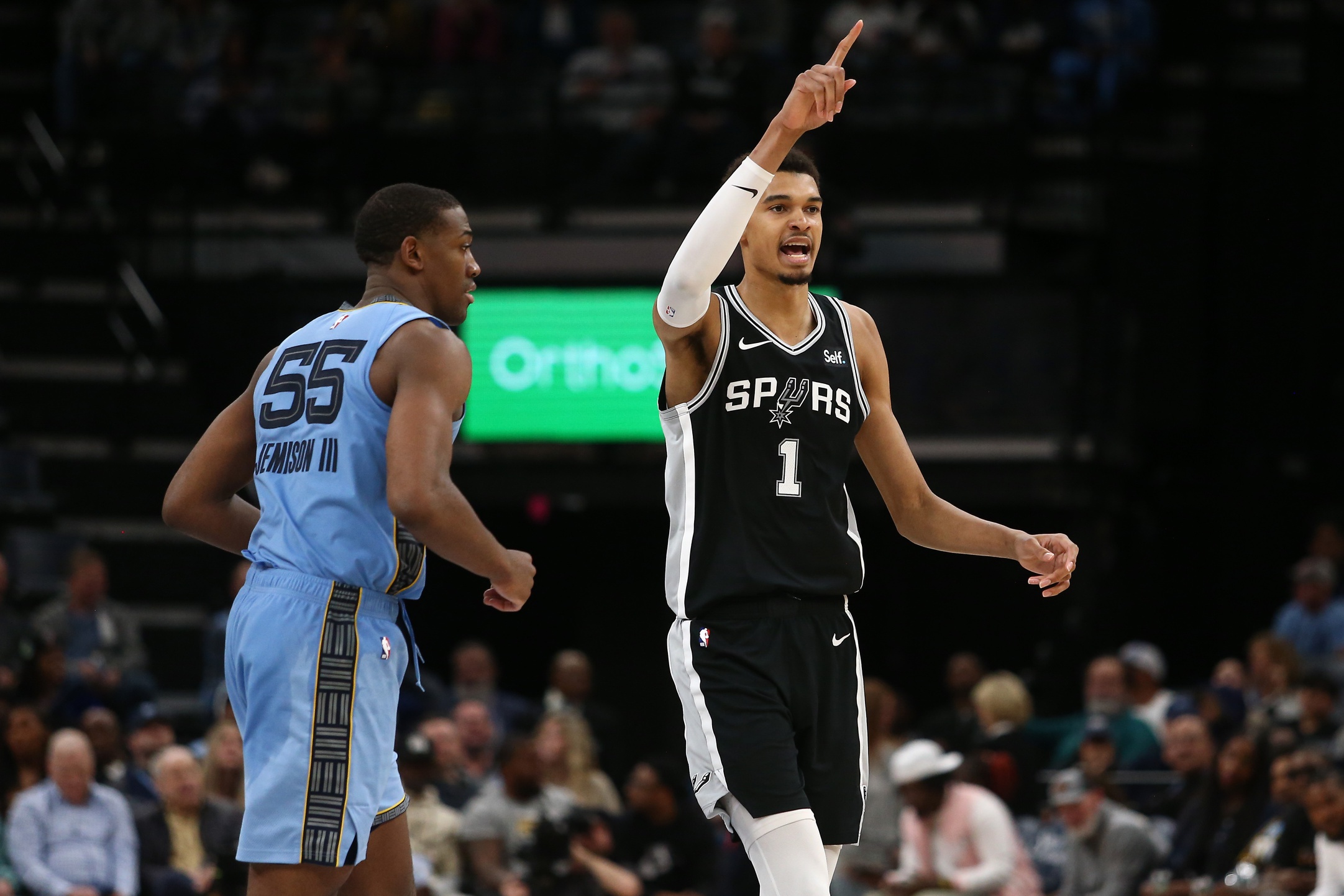Victor Wembanyama, the San Antonio Spurs’ 7-foot-4 rookie sensation, has captured the attention of the basketball world. His first season was nothing short of historic, with accolades pouring in, including the 2024 NBA Rookie of the Year award and being a finalist for the Defensive Player of the Year award. The towering center, with his combination of size and skill, has drawn comparisons to legends like Kareem Abdul-Jabbar, and Hakeem Olajuwon. However, NBA Hall of Famer Ralph Sampson recently sparked an interesting debate about Wembanyama’s dominance. His criticism implies that Wembanyama is thriving largely because he’s playing against “little people.”
Recent Victor Wembanyama Criticism Only Proves He is on Hall of Fame Trajectory
Sampson’s Perspective on Wembanyama’s Height Advantage
In an interview with AZCentral.com’s Dana Scott, Sampson shared his views on the modern NBA and how Wembanyama fits into it.
“Wembanyama’s a different player in a different era of basketball,” Sampson said. “He’s got great skills and work ethic, but he doesn’t have to play the post. If he did, it’d be a different ball game. There just aren’t many big guys to challenge him. He’s playing against little people, so the game has completely changed.”
Sampson’s comments highlight an era when dominant post players like himself, Abdul-Jabbar, and Moses Malone ruled the paint. According to him, the physicality and sheer size of these players shaped the way the game was played. In contrast, today’s NBA emphasizes speed, skill, and versatility, allowing a player like Wembanyama to flourish. He is implying that Wemby is flourishing because there are not enough tall people to challenge him. This sort of criticism does Wembanyama’s game no justice.
Flipping the Narrative: From Skepticism to Dominance
Sampson’s claim that Wembanyama faces “little people” suggests that his impact is driven mainly by his height advantage. However, this narrative doesn’t hold up when scrutinized. While Wembanyama does stand out as the tallest player in the NBA—tied with Boban Marjanović at 7-foot-4—he’s far from the only imposing big man in the league. The NBA is packed with elite players who stand 6-foot-11 or taller, including Anthony Davis, Joel Embiid, Nikola Jokić, Kristaps Porziņģis, Giannis Antetokounmpo, Kevin Durant, Jusuf Nurkić, Andre Drummond, Brook Lopez, and Chet Holmgren. These players, each dominant in their own right, are testaments to the fact that the modern NBA hasn’t gotten smaller, even if the style of play has evolved.
Wembanyama’s ability to dominate isn’t just due to his height. His versatility—handling the ball like a guard, shooting from deep, and defending with his wingspan—separates him from many of his peers. The modern game, as Sampson pointed out, is less focused on post-play, but that doesn’t mean players are smaller or less capable. Wembanyama’s impact comes from his unique blend of size and skill, not just towering over shorter opponents.
Early Doubts: The Michael Jordan and Kobe Bryant Comparisons
The skepticism surrounding Wembanyama isn’t new to NBA legends. Players like Michael Jordan and Kobe Bryant faced early doubts in their careers, only to overcome them and solidify their legacies.
For Jordan, early criticism centered around his scoring prowess. While he quickly established himself as one of the best offensive players in the league, detractors questioned whether he could lead his team to championships. They viewed him as a phenomenal scorer but doubted his ability to elevate his teammates and win at the highest level. Jordan famously silenced these critics by winning six championships with the Chicago Bulls, proving that he was more than just an elite scorer—he was one of the greatest leaders in NBA history.
Similarly, Bryant faced a unique set of doubts after the Los Angeles Lakers three-peat from 2000 to 2002, when he and Shaquille O’Neal formed one of the most dominant duos in NBA history. Following Shaq’s departure in 2004, critics wondered if Bryant could carry a team to a championship without his superstar counterpart. The narrative questioned his ability to win on his own. Bryant, of course, answered those questions emphatically, leading the Lakers to two more championships in 2009 and 2010, securing his legacy as one of the game’s all-time greats.
Just as Jordan and Bryant had to overcome early doubts, Wembanyama faces his own set of criticisms. However, the narrative that he is succeeding simply because of his height is already starting to crumble, much like the skepticism surrounding Jordan and Bryant faded over time.
The Modern NBA: Still Dominated by Big Men
Contrary to the argument that Wembanyama benefits from playing in a smaller league, the NBA is still home to plenty of elite big men. Players like Davis, Embiid, and Jokić—each towering at 6-foot-11 or taller—dominate the league with their combination of size and skill. Jokić, for example, won three MVP awards in a four-year span (2021, 2022, and 2024), showcasing how a versatile big man can control the game in today’s NBA.
While the game may no longer revolve around post-heavy strategies, big men continue to play crucial roles in both offense and defense. Embiid, who stands at 7 feet tall, won the 2022-23 MVP for his ability to score, rebound, and protect the rim, illustrating that the modern NBA isn’t devoid of impactful big men.
Wembanyama fits into this evolving style perfectly. His height and wingspan give him an undeniable physical advantage, but it’s his skills—shooting, ball-handling, and defensive versatility—that truly make him a star. In earlier eras, coaches confined centers to the paint. Today, big men must showcase versatility and excel in all areas of the game. Wembanyama is a perfect example of this evolution.
Criticisms of Wembanyama’s Ability Show His Hall-of-Fame Trajectory
As Wembanyama prepares for his second NBA season, the early narrative surrounding his dominance has already shifted. Initially, criticism centered on whether Wembanyama’s height would hinder his performance. However, after a historic rookie season, the narrative has shifted, with some now attributing Wembanyama’s success to his size advantage However, this argument doesn’t hold up under scrutiny. The league is full of talented big men, and while Wembanyama is the tallest, his success is due to his rare combination of size and skill, not just his height.
Like Jordan and Bryant before him, Wembanyama will have to continue overcoming narratives and criticisms. If his rookie season is any indication, he is well on his way to a Hall-of-Fame career, and his impact on the league will likely only grow in the years to come.






